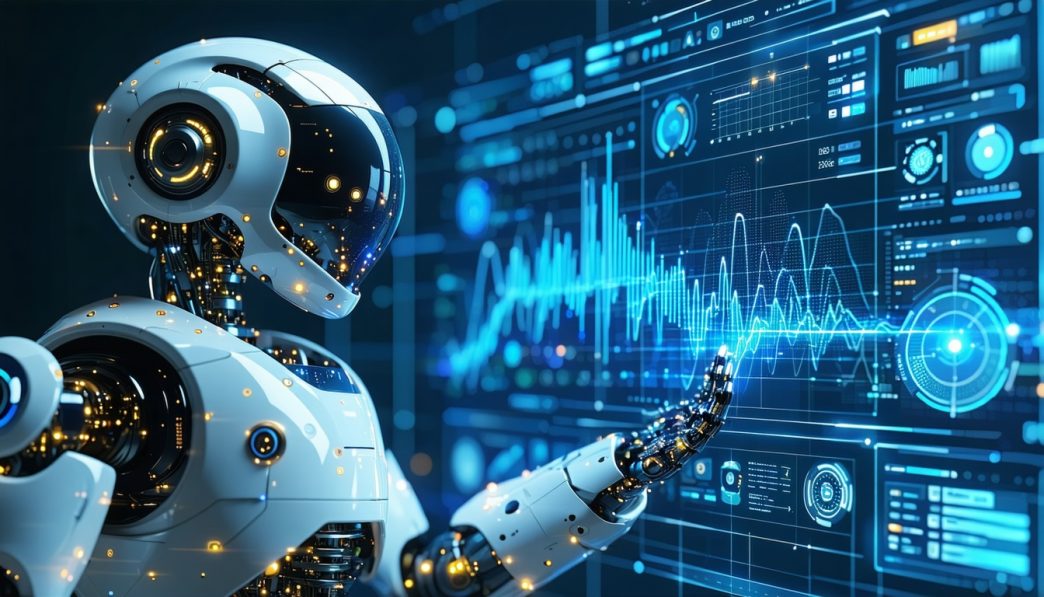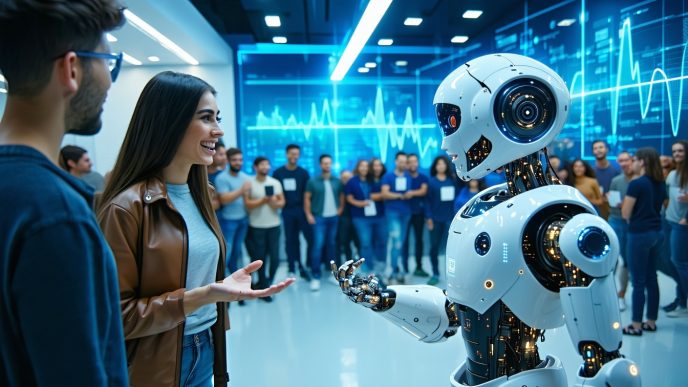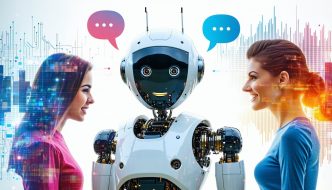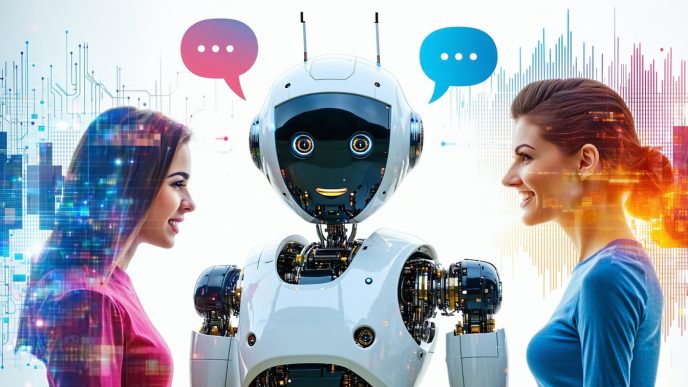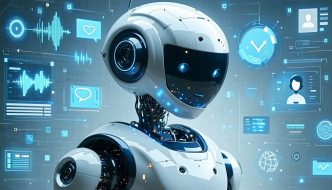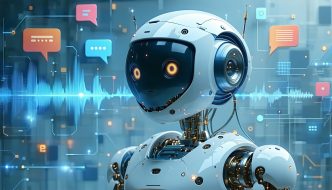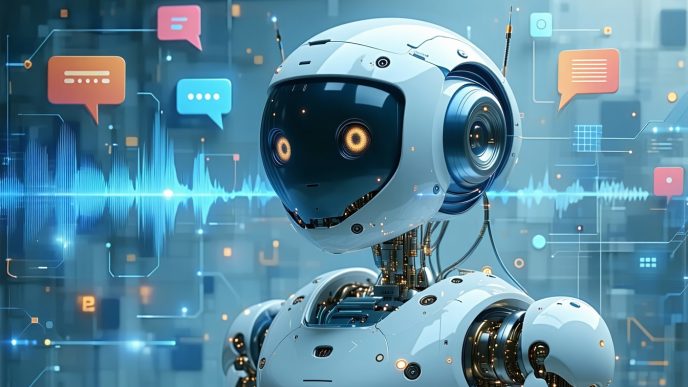Voice Command Accuracy in Robots
In recent years, the field of robotics has significantly evolved, especially in the area of voice command accuracy. This improvement primarily stems from advancements in voice recognition technology and the challenges that these systems continue to face.
Advancements in Voice Recognition Technology
Voice recognition technology has seen remarkable innovations that enhance how robots interpret and respond to human speech. Algorithms have become more sophisticated, allowing robots to process and comprehend a wider range of vocabulary and complexities in language. One notable advancement is the integration of Natural Language Processing (NLP), which equips robots to not just recognize commands but also understand context and intent.
The table below summarizes key advancements in voice recognition technology:
| Advancement | Description |
|---|---|
| Deep Learning Models | Utilization of neural networks for better accuracy. |
| Improved NLP Algorithms | Enhanced context understanding in conversations. |
| Multi-Language Support | Capability to recognize and process multiple languages. |
| Real-Time Processing | Speedy response times for user interactions. |
These improvements contribute to better voice command accuracy in robots, making them more effective in various applications, from home automation to complex task management.
Challenges Faced by Robots
Despite these advancements, robots still encounter numerous challenges that can affect their ability to accurately understand and execute voice commands. Some of the primary obstacles include:
- Environmental Noise: Background sounds can interfere with speech recognition, making it difficult for robots to isolate commands.
- Accents and Dialects: Variations in speech patterns among different regions can lead to misunderstanding. This is an ongoing challenge addressed through dedicated training on training robots to understand accents.
- Speech Patterns and Speed: Fast or unclear speech can complicate recognition efforts. Messages delivered at varying speeds may lead to accuracy problems.
To illustrate these challenges, the following table highlights factors influencing voice command accuracy and their impact levels:
| Factor | Impact Level (1-5) |
|---|---|
| Environmental Noise | 4 |
| Accents and Dialects | 3 |
| Speech Patterns/Speeds | 4 |
Understanding and addressing these issues is essential for enhancing robots’ ability to effectively interact with users. Researchers continue to explore ways to improve both the hardware and software components to ensure a seamless conversational experience with robotic systems, potentially revolutionizing personal and professional interactions. For a deeper dive into related topics, explore our articles on robot voice recognition and NLP and natural language understanding in robots.
How Robots Interpret Voice Commands
Understanding how robots interpret voice commands is essential to improving voice command accuracy in robots. This process primarily involves two components: Natural Language Processing (NLP) and the comprehension of context and intent.
Natural Language Processing (NLP) Basics
Natural Language Processing is a branch of artificial intelligence that focuses on enabling machines to understand and respond to human language in a meaningful way. The processing of voice commands involves several stages that convert spoken language into actionable data.
The basic components of NLP used by robots include:
| NLP Component | Description |
|---|---|
| Speech Recognition | Converts spoken language into text. |
| Syntax Analysis | Analyzes the grammatical structure of the commands. |
| Semantic Analysis | Identifies the meaning behind the words. |
| Dialogue Management | Manages the interaction flow and responds appropriately. |
NLP allows robots to not only recognize words but also process them to take actions according to the user’s requests. For a deeper understanding of how robots utilize NLP, visit our article on robot voice recognition and nlp.
Understanding Context and Intent
Context and intent are crucial for enhancing voice command accuracy in robots. Without understanding these elements, robots may misinterpret commands or fail to execute them correctly.
- Context refers to the situational information surrounding the voice command. This includes the environment, previous interactions, and specific user preferences.
- Intent identifies what the user wishes to achieve with their command. Robots must analyze the intent to act appropriately.
To illustrate the importance of context and intent, consider the following examples:
| Command | Context | Intended Action |
|---|---|---|
| “Turn it up” | A robot in a music-playing context | Increase volume |
| “Set a timer for 10 minutes” | A robot in a kitchen environment | Start a countdown timer |
| “Close the door” | User is near a door | Physically close the door |
Understanding the nuances of intent enables robots to engage in more natural and effective interactions. For further insights into how robots grasp intent, refer to our article on natural language understanding in robots.
With continuous advancements in NLP and the focus on context, robots are evolving to offer more sophisticated voice interactions. Exploring these advancements can significantly enhance the efficiency and accuracy of voice-controlled robots.
Factors Affecting Voice Command Accuracy
Understanding the accuracy of voice commands in robots involves examining various factors that can impact performance. These factors include environmental noise, accents and dialects, and the speech patterns and speed of the user.
Environmental Noise and Disturbances
Background noise significantly influences the ability of robots to accurately interpret voice instructions. Loud environments, such as crowded spaces or busy households, can cause robot systems to misinterpret commands.
The following table highlights common sources of environmental noise and their potential impact on voice command accuracy:
| Noise Source | Impact on Accuracy |
|---|---|
| Traffic and sirens | High |
| Conversations nearby | Moderate to High |
| Home appliances | Moderate |
| Quiet settings | Low |
Robots equipped with advanced noise-canceling technology can mitigate these effects; however, performance may still vary depending on the intensity and nature of the noise. For more insights on voice recognition capabilities, refer to our article on robot voice recognition and nlp.
Accents and Dialects
Variations in speech caused by accents and regional dialects present another challenge for voice command accuracy in robots. Different phonetic pronunciations and language nuances can lead to misunderstandings or failures in execution.
| Accent Type | Difficulty Level for Robots |
|---|---|
| Standard American | Low |
| Regional British | Moderate |
| Southern American | Moderate to High |
| Non-native English | High |
Training robots to understand a wide range of accents can enhance their voice interaction capabilities. Specialized programs focus on training robots to understand accents to improve performance across diverse user groups.
Speech Patterns and Speed
The manner in which a user speaks can also affect how accurately robots interpret commands. Speech speed, clarity, and the use of filler words can all lead to inaccuracies.
| Speech Characteristic | Impact on Accuracy |
|---|---|
| Fast and slurred speech | High |
| Clear and slow speech | Low |
| Use of filler words | Moderate |
Robots with sophisticated natural language processing and natural language understanding in robots capabilities are better positioned to handle various speech patterns. Additionally, maintaining a consistent speech style can improve interaction quality. Further exploration of conversational skills in robots can be found in our article on conversation capabilities in robots.
By recognizing these factors, developers can work to enhance voice command accuracy and overall user experience in robotic systems.
Training Robots to Follow Voice Instructions
Training robots to accurately interpret and respond to voice commands involves complex processes, primarily leveraging machine learning algorithms and extensive data collection. These components play a vital role in enhancing voice command accuracy in robots.
Machine Learning Algorithms
Machine learning algorithms are at the core of voice command processing in robots. These algorithms enable robots to learn from vast amounts of data, allowing them to improve their understanding of voice commands over time. Different types of machine learning techniques are used for various purposes in voice recognition.
The most common algorithms include:
| Algorithm Type | Description |
|---|---|
| Supervised Learning | Trains the system on labeled data to recognize patterns. |
| Unsupervised Learning | Identifies patterns without pre-existing labels. |
| Reinforcement Learning | Learns optimal actions based on feedback from interactions. |
Through these techniques, robots can adjust their responses based on user interactions and improve their accuracy in understanding spoken language. For example, using natural language understanding in robots principles, robots can decipher complex phrases and commands better.
Data Collection and Analysis
Effective training of robots requires large datasets to enhance their learning capabilities. Data collection involves gathering diverse voice samples from various users to create a robust training set. This captures a wide range of accents, speech patterns, and command types to prepare robots for real-world interactions.
The data is then analyzed to identify common patterns and improve the robot’s algorithms. This analysis may involve:
| Analysis Method | Purpose |
|---|---|
| Data Annotation | Labeling data to teach robots what specific commands mean. |
| Pattern Recognition | Understanding how different voices express similar commands. |
| Performance Metrics | Measuring how effectively a robot responds to various commands. |
For in-depth processing, techniques such as speech to text processing in robots are utilized to convert spoken commands into text, which the system can analyze further.
Training using a comprehensive dataset ensures that robots can recognize a variety of accents and contexts. For examples of successful accent training, please review our article on training robots to understand accents.
Through advancements in machine learning and meticulous data analysis, robots are becoming increasingly proficient in following voice instructions. This development not only enhances user experience but also sets the foundation for more sophisticated interactions in the future. For additional insights on how robots engage in conversations, refer to our article on conversation capabilities in robots.
Improving Voice Interaction with Robots
Enhancing voice interaction with robots is essential for achieving higher levels of voice command accuracy in robots. This involves implementing effective feedback mechanisms and adopting continuous learning strategies that allow robots to adapt to various user interactions more effectively.
Feedback Mechanisms
Feedback mechanisms play a critical role in helping robots understand how accurately they have interpreted voice commands. These mechanisms can include various forms of user input, such as verbal confirmation, touchscreens, and visual cues. When a robot receives feedback, it can analyze discrepancies between the intended command and the actual response.
| Feedback Method | Description |
|---|---|
| Verbal Confirmation | Users confirm if the robot understood correctly. |
| Touchscreen Input | Users select options on a screen for clarity. |
| Visual Cues | Robots display messages to seek user confirmation. |
Effective feedback allows robots to reassess their understanding of voice commands, leading to improved interactions over time. By refining their interpretations based on this feedback, robots enhance their overall performance in speech recognition and task execution. For additional insights on how robots process speech, visit our article on robot voice recognition and nlp.
Continuous Learning and Adaptation
Continuous learning and adaptation are vital for improving voice command accuracy. Robots can utilize machine learning to enhance their ability to recognize different speech patterns, accents, and commands. By collecting data from every interaction, robots can adapt to individual user preferences and communication styles.
| Learning Method | Description |
|---|---|
| Supervised Learning | Robots learn from labeled examples provided by humans. |
| Unsupervised Learning | Robots analyze unstructured data to find patterns. |
| Reinforcement Learning | Robots improve their responses based on rewards or penalties from user feedback. |
Through these learning methods, robots become more proficient at understanding context and intent. This adaptability leads to better conversation capabilities, allowing robots to engage in more natural interactions with users. To discover more about how robots manage conversation dynamics, explore our article on conversation capabilities in robots.
Reinforcing the importance of continuous learning, robots can also be trained to understand different accents, further enhancing their ability to accurately follow voice commands. Insights into this training process can be found in our article on training robots to understand accents.
Improving voice interaction not only enhances user experience but also contributes to the overall efficiency of robots in task performance and functionality. As technology progresses, the potential for smoother, more seamless interactions between humans and robots continues to expand, creating exciting opportunities in the field of robotics. For a glimpse into what the future holds for these interactions, read more in our article on future of voice interaction with robots.
Future Trends in Voice Command Accuracy
As technology evolves, so do the capabilities of robots in understanding and executing voice commands. Future trends emphasize the integration of advanced artificial intelligence (AI) and enhanced interaction between humans and robots, leading to improvements in voice command accuracy in robots.
Integration of AI and Voice Technology
The merging of AI with voice technology is poised to revolutionize how robots comprehend and respond to spoken instructions. By leveraging sophisticated algorithms, robots can gain a deeper understanding of context, intent, and nuances in human speech. This integration allows for more accurate interpretations of voice commands, leading to smoother interactions.
| AI Technology | Benefits |
|---|---|
| Machine Learning | Enhances the understanding of speech over time |
| Natural Language Processing | Improves the robot’s ability to process and interpret commands |
| Deep Learning | Facilitates multi-layer analysis for better context recognition |
As robots become increasingly proficient in processing natural language, their performance in real-world settings will improve significantly. This shift will allow users to interact more intuitively with robots, similar to using familiar virtual assistants like Siri or Alexa. For a deeper exploration of this topic, visit our article on robot voice recognition and nlp.
Enhanced Human-Robot Interaction
The future also sees advancements in the way humans engage with robots. Enhanced human-robot interactions are crucial for fostering seamless communication. Expected innovations include robots that can recognize emotional cues in voice, allowing them to tailor responses accordingly. By understanding emotional context, robots can contribute positively to user experience.
Various factors contribute to successful human-robot interaction:
| Interaction Aspect | Description |
|---|---|
| Emotional Insight | Robots recognizing tone and mood to adjust responses |
| Contextual Awareness | Ability to remember previous interactions for continuity |
| Personalization | Adapting responses based on user preferences |
These improvements will lead to a more engaging and effective interface between humans and machines. Enhanced conversation capabilities will ensure that robots are not simply following commands but are also providing relevant feedback and support. For more insights, check out our article on conversation capabilities in robots.
Through the ongoing integration of AI and innovations in interaction, the evolution of voice command capabilities in robots continues, paving the way for more competent and relatable robotic companions.
Evaluating Voice Command Accuracy
Understanding how robots process voice commands requires examining the methods used to measure their accuracy and the real-world applications that showcase these capabilities.
Metrics Used to Measure Accuracy
Voice command accuracy in robots can be quantified using several metrics. These metrics help in assessing the performance of different voice recognition systems and highlight areas that need improvement.
| Metric | Description |
|---|---|
| Word Error Rate (WER) | Percentage of incorrect words compared to the total words in a transcription. Lower percentages indicate better accuracy. |
| Command Recognition Rate | Percentage of successfully recognized commands out of total spoken commands. Higher rates reflect better understanding. |
| Intent Recognition Accuracy | Measures how accurately a robot can deduce the intended action from given commands. Critical for task-oriented interactions. |
| Response Time | Time taken by the robot to process the command and provide a response. Quicker responses often enhance user experience. |
These metrics are crucial for evaluating the effectiveness of robot voice recognition and NLP systems.
Real-World Applications and Case Studies
Several real-world scenarios demonstrate the practical application of voice command accuracy in robots. These examples showcase how well robots can follow voice instructions in different environments.
-
Home Assistants: Robots used in smart homes frequently utilize voice commands. A study showed that achieving a command recognition rate of 90% improved user satisfaction by 20%. Families using these robots often report smoother interaction experiences.
-
Healthcare Robots: In medical settings, robots assist with patient care by executing commands with a 95% command recognition rate in controlled environments. This level of accuracy is essential for ensuring tasks are completed efficiently and safely.
-
Service Robots in Hospitality: Robots in restaurants and hotels are trained to follow voice instructions. A case study indicated that when implementing feedback mechanisms, these robots could increase their intent recognition accuracy to 85%, leading to an enhanced guest experience.
-
Education and Learning: Educational robots used in classrooms benefit from continuous learning and adaptation. Schools reported a significant reduction in instruction misunderstandings after the robots’ recognition accuracy was improved through regular updates.
These examples illustrate the importance of evaluating voice command accuracy and highlight the innovations occurring in the field. For additional insights on the evolution of robot capabilities, refer to our articles on natural language understanding in robots and conversation capabilities in robots.


